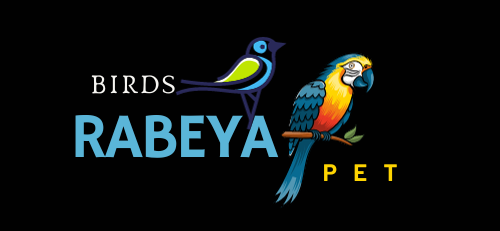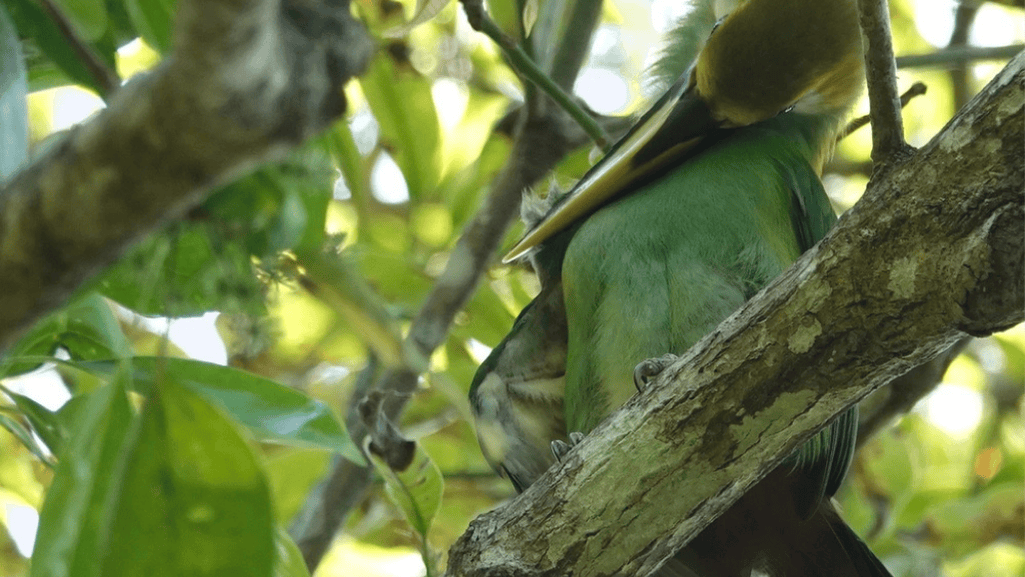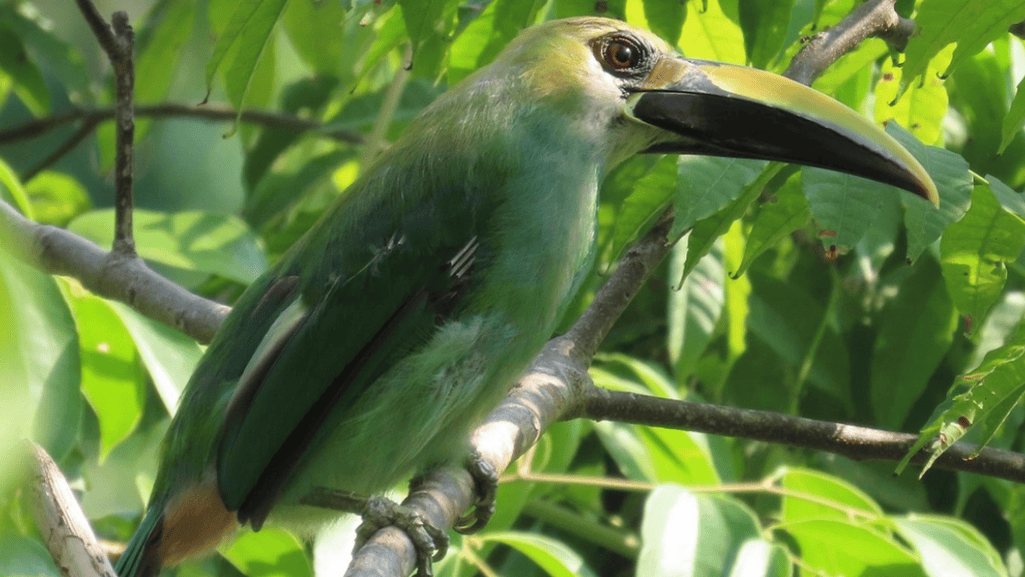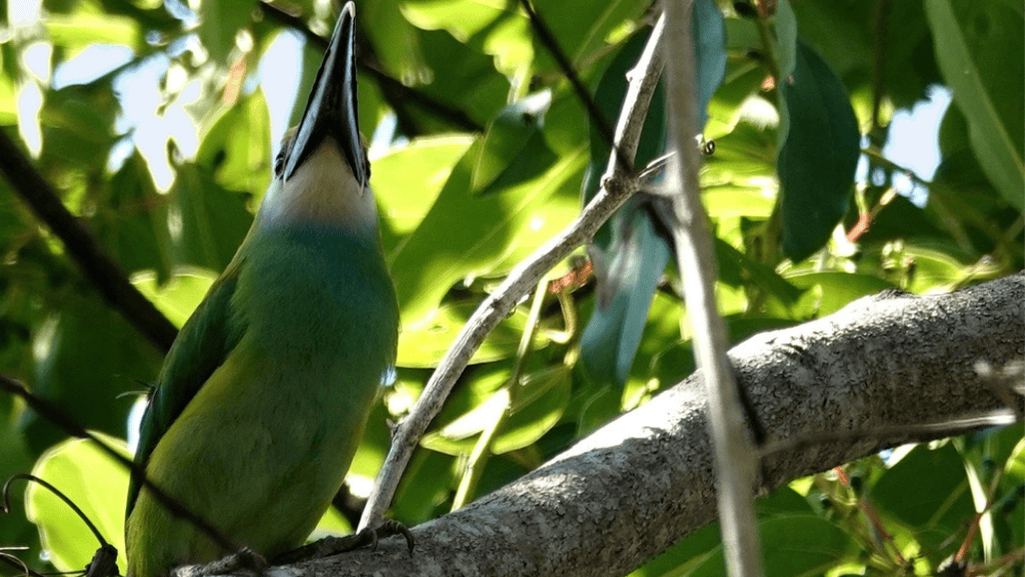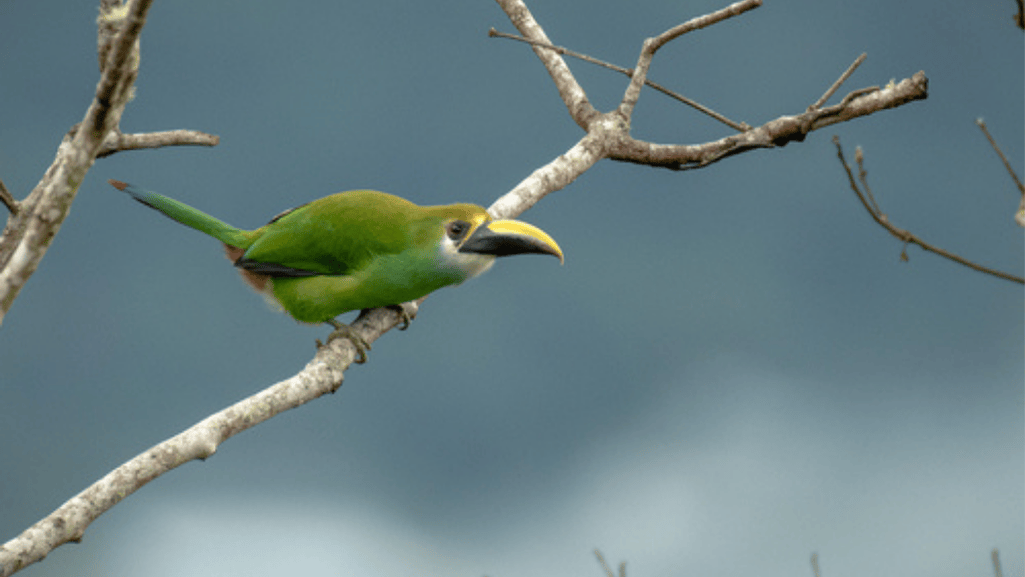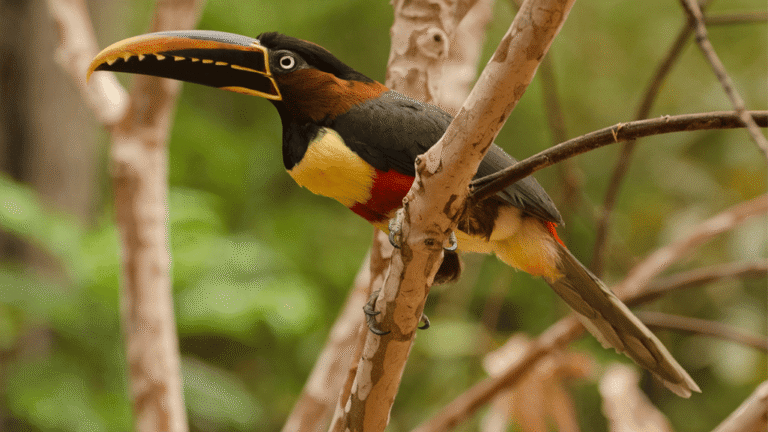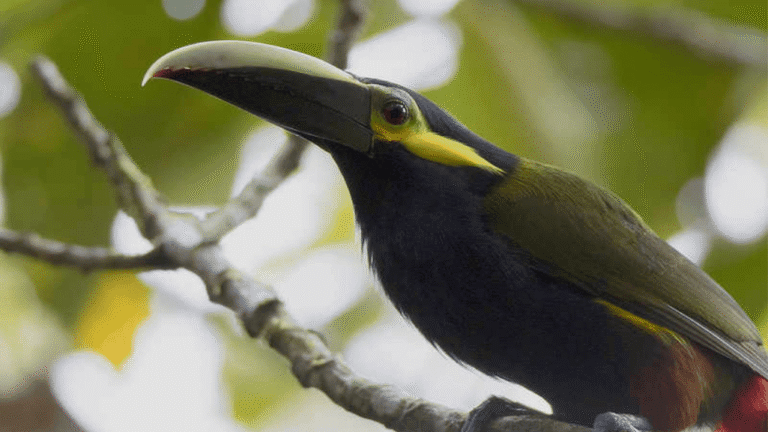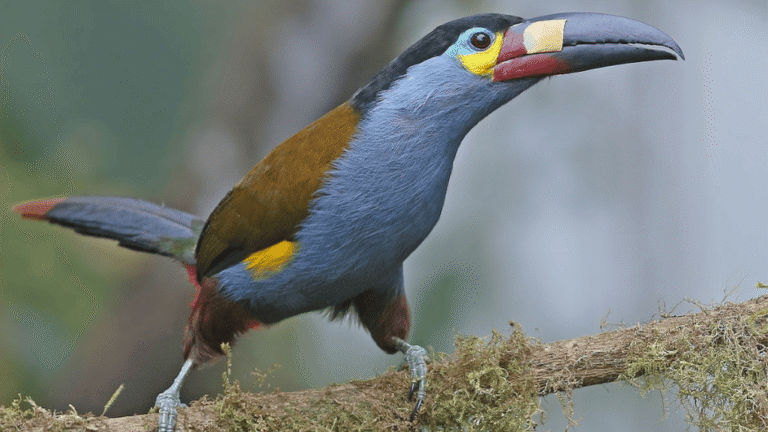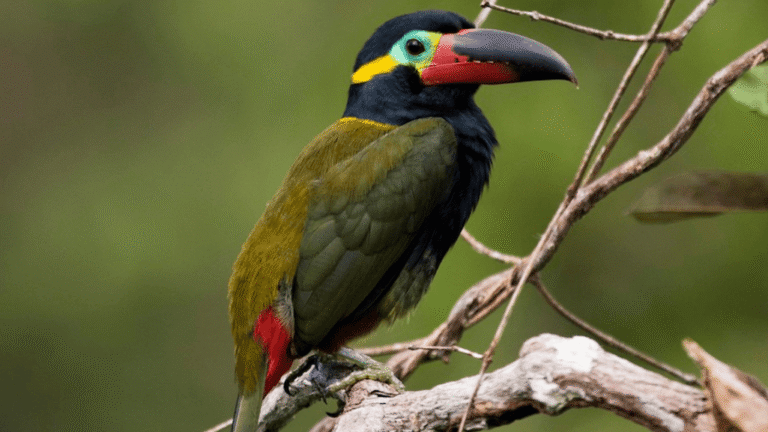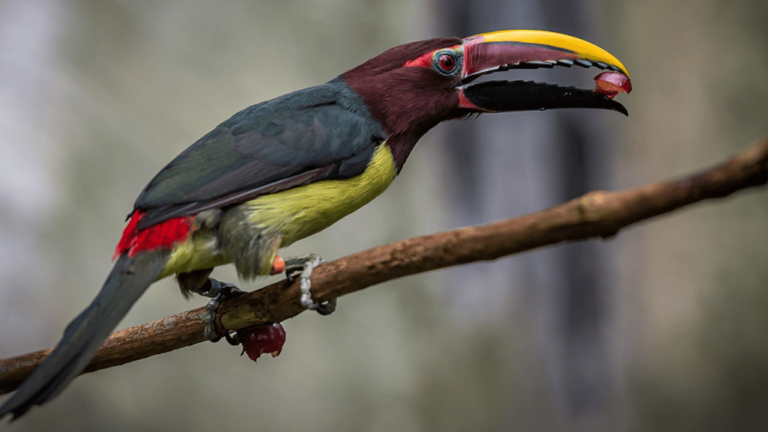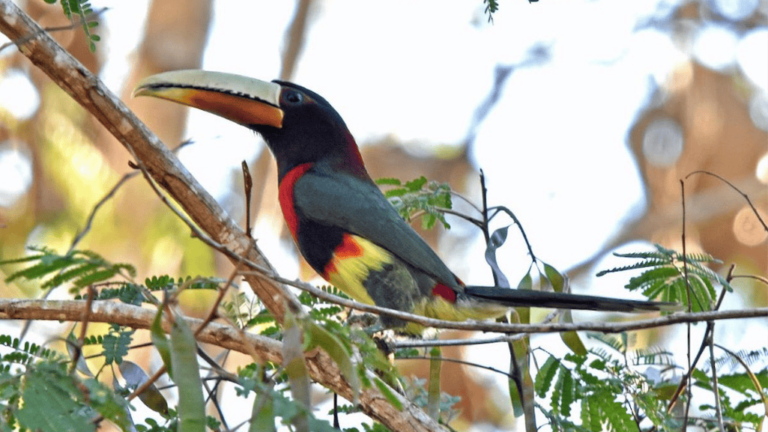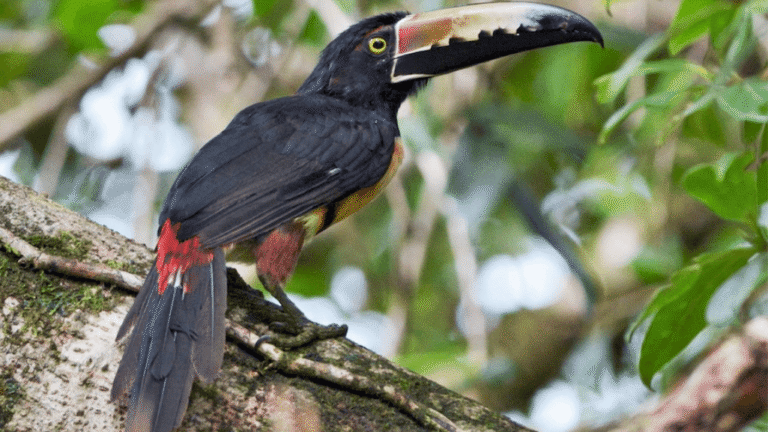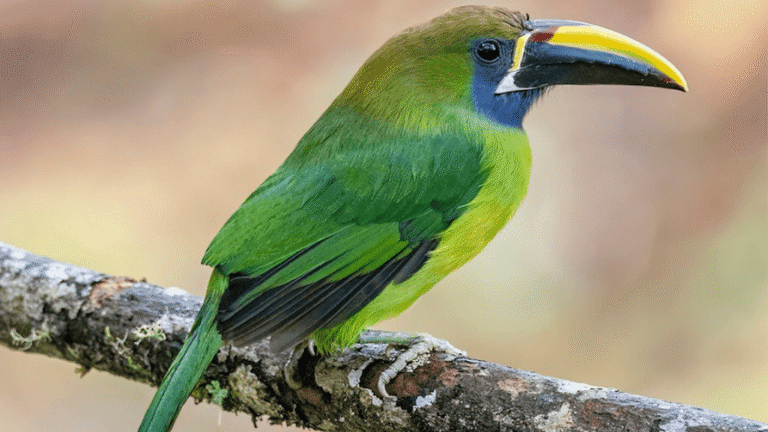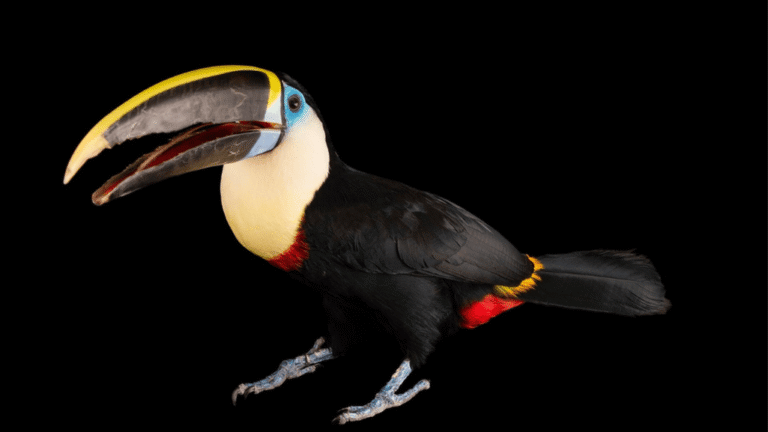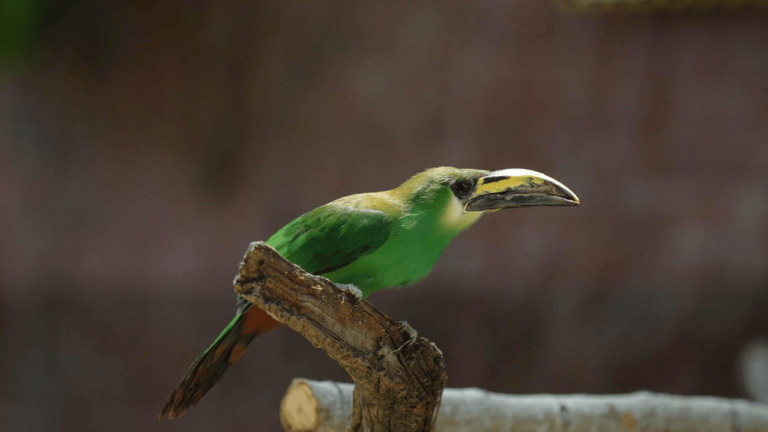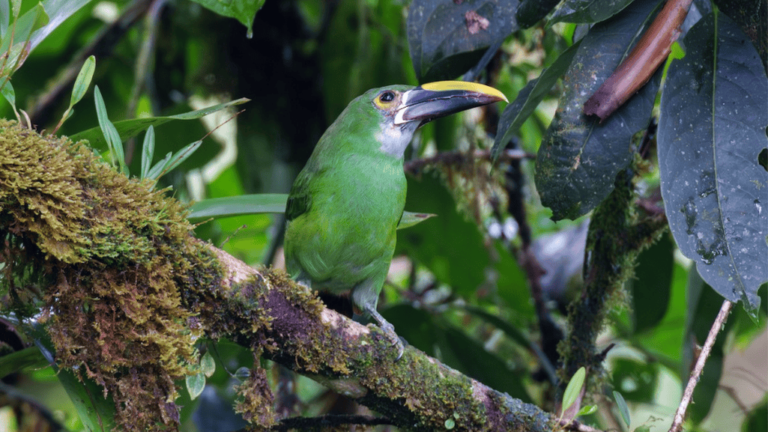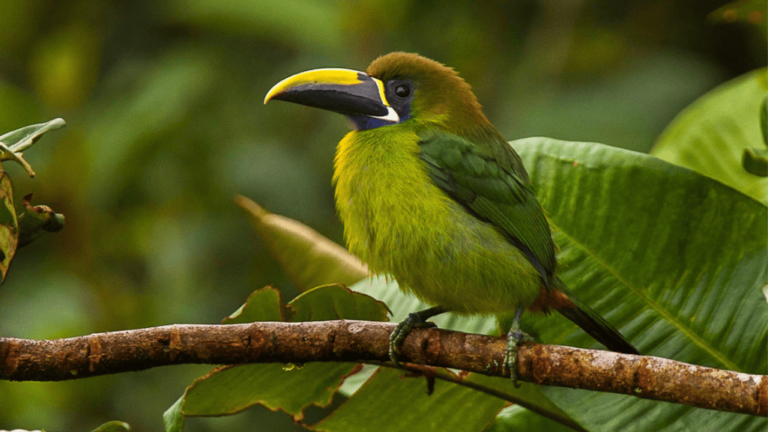The Waglers Toucanet, scientifically known as Aulacorhynchus wagleri, is an exquisite and vibrant bird species that is highly sought after by birdwatchers and nature photographers. Its striking plumage, with hues of green, blue, and yellow, makes it a standout in the tropical forests where it is found. This toucanet is an endemic species native to Central America, specifically Mexico and Nicaragua. Its vibrant appearance and unique traits make it a favorite subject for birdwatching enthusiasts and nature photographers.
- The Wagler’s Toucanet, also known as Aulacorhynchus wagleri, is an exotic bird species with vibrant plumage.
- Endemic to Central America, it is predominantly found in tropical forests in Mexico and Nicaragua.
- Birdwatchers and nature photographers are captivated by its colorful appearance and unique characteristics.
- The Wagler’s Toucanet is a popular subject for birdwatching and nature photography due to its vibrant plumage.
- Observing and capturing the beauty of this tropical bird species is a rewarding experience for nature enthusiasts.
Taxonomy and Systematics of the Wagler’s Toucanet
The taxonomy of the Wagler’s Toucanet has undergone revisions in recent years. Formerly known as Aulacorhynchus prasinus, it was split into multiple species and subspecies. The International Ornithological Committee (IOC) and BirdLife International’s Handbook of the Birds of the World recognized this split.
The current taxonomy of the Wagler’s Toucanet includes the following species and subspecies:
| Scientific Name | Common Name |
|---|---|
| Aulacorhynchus wagleri | Wagler’s Toucanet |
| Aulacorhynchus caeruleogularis | Blue-throated Toucanet |
| Aulacorhynchus albivitta | White-throated Toucanet |
| Aulacorhynchus atrogularis | Black-throated Toucanet |
| Aulacorhynchus prasinus | Emerald Toucanet |
It’s important to note that not all classification committees have followed these splits, leading to some variations in taxonomy among different sources.
Description and Distribution of the Wagler’s Toucanet

https://www.youtube.com/watch?v=iQX9Hlf9XPQ
The Wagler’s Toucanet, scientifically known as Aulacorhynchus wagleri, is a medium-sized bird with a length ranging from 29 to 37 cm and a weight of approximately 150 to 240 g. Both males and females exhibit similar plumage, characterized by a vibrant display of mainly green feathers, complemented by a bronze tinge on the crown and a distinct white lower face and throat. This combination of colors makes the Wagler’s Toucanet a visually stunning bird species.
This beautiful toucanet is predominantly found in humid montane forests, where its vibrant plumage stands out against the lush greenery. However, it is not limited to these forests and can also be observed in secondary forests, shrublands, pastures, and even plantations. The Wagler’s Toucanet is an adaptable species that can thrive in various habitats within its distribution range.
The distribution of the Wagler’s Toucanet spans Central America, specifically Mexico and Nicaragua. It is primarily found in these regions, although its range may extend to neighboring areas. Its habitat preference includes elevations ranging from near sea level all the way up to 3,000 meters, showcasing its ability to adapt and thrive across different altitudes.
To catch a glimpse of the Wagler’s Toucanet in its natural habitat is to witness the splendor of nature’s colors and the diversity of bird species in the Central American tropical forests.
Experience the vibrant plumage of the Wagler’s Toucanet, scientifically known as Aulacorhynchus wagleri. This medium-sized bird, measuring between 29 to 37 cm in length and weighing approximately 150 to 240 g, showcases a stunning combination of green feathers with bronze accents on the crown. The white lower face and throat provide a striking contrast, making this toucanet species a visual spectacle.
The Wagler’s Toucanet is predominantly found in humid montane forests, but it can also inhabit secondary forests, shrublands, pastures, and plantations. Its adaptability to different habitats within its distribution range, which includes Mexico and Nicaragua in Central America, is a testament to its resilience. Whether near sea level or at elevations of up to 3,000 meters, the Wagler’s Toucanet continues to thrive and captivate observers with its vibrant presence.
Waglers Toucanet
The Wagler’s Toucanet, scientifically known as Aulacorhynchus wagleri, is a non-migratory bird species that displays gregarious behavior and fascinating feeding habits. These characteristics contribute to the toucanet’s unique presence in its natural habitat.
The Wagler’s Toucanet is known for its social nature, often gathering in groups of up to 10 individuals. This gregarious behavior not only serves as a means of protection but also allows for social interactions within the group.
When it comes to feeding, the Wagler’s Toucanet showcases versatile foraging techniques. It primarily relies on the behavior known as gleaning, perching on branches while carefully selecting its food. This bird’s feeding habits include picking fruits, capturing invertebrates, and even preying on smaller vertebrates such as birds, eggs, lizards, and snakes.
During the breeding season, occurring between March and July, the Wagler’s Toucanet nests in tree cavities. These nest sites provide a safe and secure environment for the toucanet to lay its eggs and raise its offspring. A typical clutch consists of three to four eggs, which are incubated by the parents until they hatch.
Feeding Habits of the Wagler’s Toucanet:
| Feeding Habits | Description |
|---|---|
| Fruits | The Wagler’s Toucanet feeds on a variety of fruits, extracting essential nutrients from their pulp. |
| Invertebrates | By capturing and consuming various invertebrates, the toucanet obtains additional protein sources. |
| Vertebrates | Although not the primary food source, the Wagler’s Toucanet occasionally preys on smaller vertebrates like birds, eggs, lizards, and snakes to supplement its diet. |
The Wagler’s Toucanet’s fascinating behavior and diverse feeding habits make it a captivating avian species to observe and appreciate. Its ability to thrive in its natural habitat demonstrates its ecological significance within Central America’s tropical forests.
Vocalizations and Status of the Wagler’s Toucanet
The Wagler’s Toucanet, also known by its scientific name Aulacorhynchus wagleri, is not only visually stunning but also has distinct vocalizations that add to its unique charm. When it comes to vocalizing, this colorful bird has a couple of signature calls that set it apart from other species.
The first vocalization is a nasal, barking call that can be described as “Wok!-Wok!-Wok!”. This call is often used for communication within the toucanet’s group and can be heard echoing through the tropical forests where it resides.
The second vocalization is a growling, throaty sound that can be best described as “wra’a’a’a’a’a’ak”. This call is often associated with territorial disputes or as a means of defending its nesting site.
These unique vocalizations are not only fascinating to listen to but also serve essential functions in the toucanet’s daily life, from communication to establishing boundaries.
Despite its captivating vocal abilities, the Wagler’s Toucanet faces the ongoing threat of habitat destruction. As a result, conservation efforts are crucial to protect the tropical forests that serve as its natural habitat.
Since its population is currently considered stable, the Wagler’s Toucanet has been assessed as being of Least Concern by the International Union for Conservation of Nature (IUCN). However, continuous habitat destruction poses a significant risk to its long-term survival.
By raising awareness about the conservation status of the Wagler’s Toucanet, we can inspire action and promote initiatives that aim to preserve the natural habitat of this magnificent bird species.
| Vocalizations: | Status: |
|---|---|
| Nasal, barking “Wok!-Wok!-Wok!” call | Considered of Least Concern by the IUCN |
| Growling, throaty “wra’a’a’a’a’a’ak” | Threatened by habitat destruction |
Conclusion
The Wagler’s Toucanet, scientifically known as Aulacorhynchus wagleri, is a captivating and vibrant bird species that is highly sought after by birdwatchers and nature photographers. With its striking plumage and unique behaviors, this endemic toucanet species adds a splash of color to the tropical forests of Central America.
Although the taxonomy of the Wagler’s Toucanet has undergone revisions, it continues to be a favorite subject for observation and documentation. Its vocalizations, including the distinctive “Wok!-Wok!-Wok!” call, add to its allure and make it a recognizable presence in its natural habitat.
However, the conservation status of the Wagler’s Toucanet remains a concern. Habitat destruction continues to threaten the survival of this species and its tropical forest ecosystem. It is crucial for us to protect and preserve these forests to ensure the continued existence of this beautiful bird.
In conclusion, the Wagler’s Toucanet is a true gem of the avian world. Birdwatchers and nature enthusiasts can find joy and inspiration in observing and photographing this vibrant species. Let us appreciate the beauty of the Wagler’s Toucanet and work together to safeguard its habitat for future generations.
FAQ
What is the scientific name of the Wagler’s Toucanet?
The scientific name of the Wagler’s Toucanet is Aulacorhynchus wagleri.
Where is the Wagler’s Toucanet native to?
The Wagler’s Toucanet is native to Central America, specifically Mexico and Nicaragua.
What is the size and weight of the Wagler’s Toucanet?
The Wagler’s Toucanet is a medium-sized bird, measuring between 29 to 37 cm in length and weighing around 150 to 240 g.
What is the habitat of the Wagler’s Toucanet?
The Wagler’s Toucanet is predominantly found in humid montane forests, but can also be seen in secondary forests, shrublands, pastures, and plantations. It inhabits a range of elevations, from near sea level up to 3,000 m.
What is the behavior and feeding habits of the Wagler’s Toucanet?
The Wagler’s Toucanet is a gregarious bird, often gathering in groups of up to 10 individuals. It forages by gleaning, perching on branches while picking fruits and capturing invertebrates. Its diet consists of a variety of fruits, invertebrates, and even vertebrate prey such as birds, eggs, lizards, and snakes.
What is the conservation status of the Wagler’s Toucanet?
The Wagler’s Toucanet has been assessed as being of Least Concern by the IUCN, indicating that its population is stable. However, it is vulnerable to habitat destruction.

